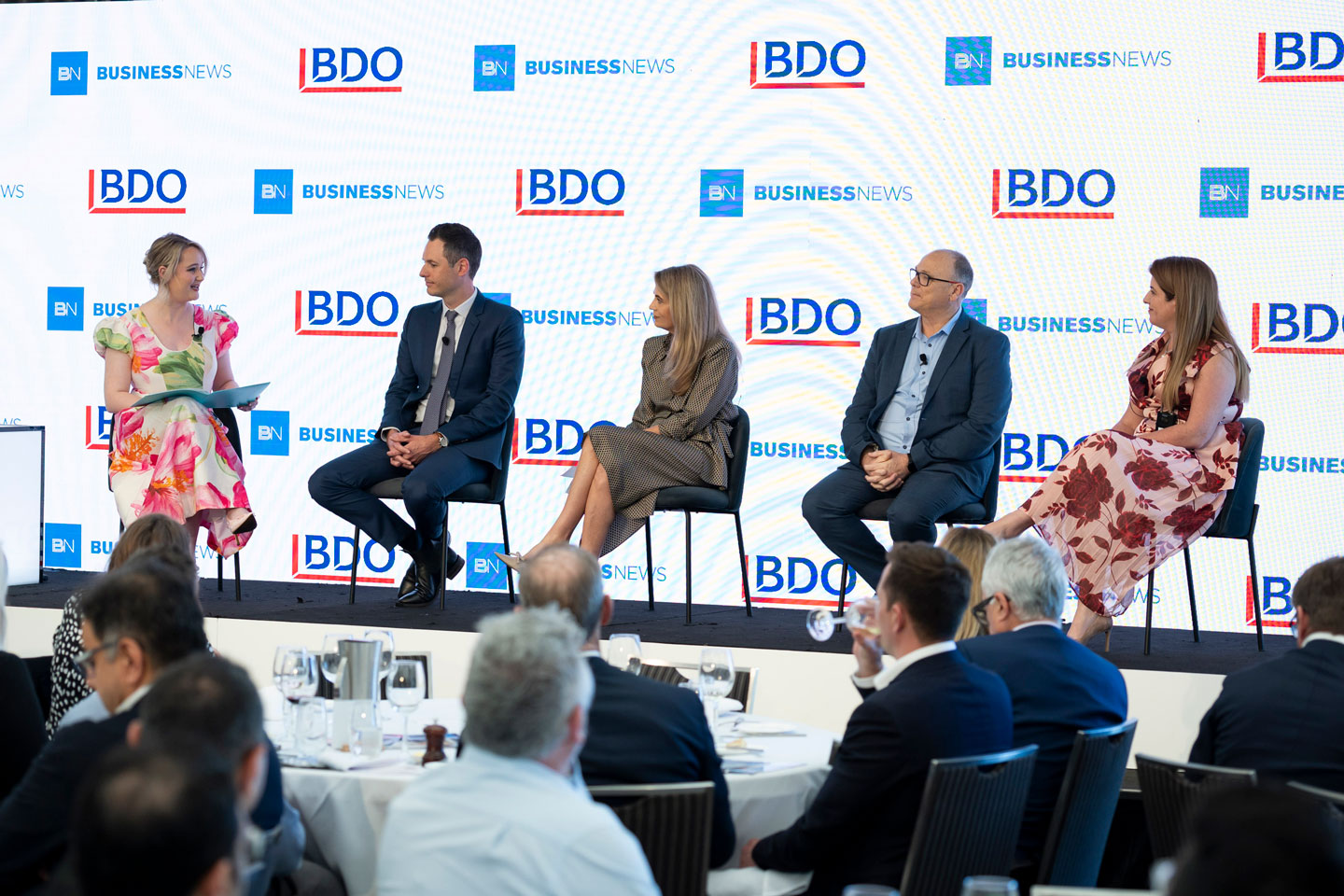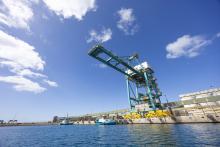

Western Australia is entering a new phase of economic growth – one defined not only by its resource strength but by how technology, innovation, data and artificial intelligence are reshaping the way industries operate locally and globally.
At BDO’s recent Navigating the Future lunch at Fraser’s Kings Park in September, business leaders and industry experts explored the state’s economic trajectory, including the opportunities and challenges presented by digital transformation.
The discussion underscored WA’s economic resilience, innovation capacity and the strategic pathways required to remain globally competitive in a rapidly evolving landscape.
“The next challenge is how we use technology to take that strength further,” said Andy Wood, Microsoft’s regional managing director for defence and intelligence across Asia, who opened the event with a keynote address focused on digital innovation and productivity.
WA has been on a resilient growth trajectory, with the state’s domestic economic output growth at 5.3 per cent in 2023–24 – more than double the national growth of 2.4 per cent – making it the fastest-growing jurisdiction in Australia for that period.
BDO chief economist Anders Magnusson said that while resources continue to underpin this performance, the next phase of growth will come from how well WA leverages data, digital capability and innovation.
“It’s AI,” he said. “If you were to start your business again today from scratch with AI at its core – that’s likely to be your competitor in a couple of years.”
While AI adoption is increasingly separating high-performing organisations from those that are not progressing with modern technologies, the success of AI adoption in business depends on how organisations integrate it into their wider strategy and team culture.
“Embedding technology thoughtfully and ensuring your team can use it effectively is where real productivity gains and innovation will come from,” Mr Magnusson added.
Harnessing the potential of data
WA’s resource sector, which supports around 30 per cent of jobs and contributes one-third of the state’s revenue, is already leveraging AI for productivity and safety gains.
Sally Langer, who serves on several mining company boards including Northern Star Resources, Sandfire Resources and The Gold Corporation, said companies are increasingly using AI and data analytics to optimise operations.
“Boards are using AI to understand operations more deeply, identify bottlenecks, and make better decisions,” she said. “It’s not just technology – it’s smarter use of information.”
She said predictive analytics is helping companies anticipate supply-chain disruptions and plan maintenance schedules, reducing downtime and improving overall productivity.
“We can now model scenarios in advance,” she added. “That allows for proactive rather than reactive decision-making.”
At the same time, she said governance and ethics must evolve in step with technology. “AI gives us powerful tools, but boards need to make sure decisions are transparent and responsible,” she said.
“It’s important to ask the question: where is this information going, and how protected is it? In my haunts we’re putting in AI policies and procedures about its use.”
Transforming supply chains and operations
Across sectors, digital technology is also changing how WA’s supply chains, ports and manufacturing operations are managed.
Southern Ports chief executive officer Keith Wilks, who oversees regional ports in WA’s south including the ports at Albany, Bunbury and Esperance, said digital tools such as “digital twins” are enabling more data-driven decision-making.
“They’re effectively decision-support tools,” he said. “Digital twins allow us to narrow the difference between the potential and actual so we can make better, more timely decisions and create capacity.”
Mr Wilks said continued investment in digital infrastructure will be essential to improve logistics and responsiveness as ports adapt to future trade demand.
“Digital systems allow us to manage logistics more effectively, respond quickly to changing demand, and adapt to new export markets,” he said.
Adopting advanced analytics and real-time monitoring can also help mitigate supply-chain risks exposed by recent global disruptions.
Julie Drago, chief executive of Realside Ovest who has 30 years of experience in the industrial property sector, said automation and sustainability are now central to project design.
“We’re seeing automation, robotics and AI being used in manufacturing and construction,” she said. “It’s improving productivity and efficiency while also helping meet ESG expectations.”
She added that long approval processes remain a barrier that can slow innovation. “Every single project I build takes longer to get approval than it should,” she said. “There’s a fundamental issue here.”
Ms Drago said forward-thinking design and modular construction can reduce delays and waste while promoting collaboration and upskilling.
“Planning and automation reduce delays and waste, but they also require upskilling and collaboration across teams,” she said.
Balancing growth and governance
The panel highlighted the need for governance, privacy and ethics in digital adoption.
“AI has extraordinary potential, but there needs to be good governance around privacy, ethics and decision-making,” Ms Langer said. “It’s not just about the technology – it’s about people, processes and accountability.”
Mr Wood reminded the room that digital transformation ultimately depends on leadership. “It’s easy to get excited about the tools,” he said. “But the success of any technology comes down to how leaders manage risk, empower their people and build trust.”
Integrating technology into day-to-day operations can unlock productivity gains, according to Mr Magnusson. “Investing in innovation is crucial,” he said. “The real advantage comes from embedding technology into everyday operations and continually improving how we work.”
For Mr Magnusson, WA’s next phase of prosperity will depend on how effectively the state integrates technology, productivity and workforce capability.
“The fundamentals are there,” he said. “The focus now is on how we use innovation to turn those fundamentals into lasting advantage.”
As the discussion concluded, the panellists agreed that technology’s true power lies in its connection to people and process. “It’s not just about resources or technology,” Ms Langer said. “It’s about people, planning, and making innovation work for everyone.”



















